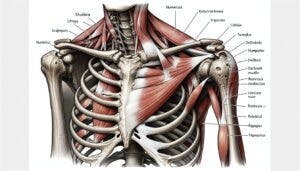Welcome to the latest installment of our health and wellness blog here at Altitude Physical Therapy, where we provide cutting-edge advice and therapy options for those dealing with a broad range of physical ailments. In this post, we will delve into the critical topic of rotator cuff rehabilitation, sharing with you the best practices that have been proven to enhance recovery and future injury prevention. Whether you’re an athlete or someone struggling with day-to-day tasks due to shoulder pain, these insights can help you regain strength and mobility
effectively.

Understanding the Rotator Cuff
The rotator cuff is a group of muscles and tendons that surround the shoulder joint, maintaining the head of your upper arm bone firmly within the shallow socket of the shoulder. Injuries to this area can be due to acute damage or the result of chronic wear and tear. To facilitate healing and regain function, it’s crucial to follow a rehabilitation regimen that is both scientifically grounded and tailored to your individual needs.
Initial Steps for Recovery – short term interventions
- Rest: Give your shoulder proper time to heal by avoiding activities that cause pain or discomfort.
- Ice: Apply ice packs to reduce inflammation and pain in the affected area.
- Non-steroidal Anti-inflammatory Drugs (NSAIDs): Consult your healthcare provider about the potential use of NSAIDs to manage pain.
Physical Therapy Interventions – solve the actual problem
Engaging in a structured physical therapy program is paramount for effective rotator cuff rehabilitation. Our clinic prioritizes one-on-one treatment sessions, focusing on exercises that are crucial for a full recovery. You will start with a full, one hour evaluation where you will be prescribed a therapy plan for follow up sessions. This plan will be tailored to your body’s specific needs and your ultimate goals for returning to normal function.
Strengthening and Flexibility Exercises
Moving towards an active rehabilitation phase involves exercises aimed at restoring strength and flexibility:
- Isometric Exercises: Begin with non-movement exercises to reintroduce gentle tension to the rotator cuff muscles.
- Range of Motion: Gradually increase the shoulder’s range of motion with exercises like pendulum swings and passive stretching.
- Strengthening: Once pain levels have decreased, incorporate resistance exercises to build strength in the shoulder muscles and surrounding areas.
For a specific exercise plan for you consult with one of our licensed physical therapists.
Advanced Rehab and Prevention
As strength and flexibility return, focus on exercises that mimic daily activities or sports-specific movements to ensure a full return to functionality. Balance and proprioception training are also integral to a comprehensive rehabilitation program, helping to prevent future injuries.
Maintaining Shoulder Health Post-Rehab
Rehabilitation doesn’t end once pain subsides. Continue with a maintenance program (provided by your therapist during your therapy plan follow up sessions) that includes:
- Regular stretching to maintain flexibility
- Strengthening exercises to support the shoulder joint
- Proper warm-ups before physical activities
It’s imperative to listen to your body and not rush the recovery process. Gradual progression under the watchful eye of your therapist is key to a successful outcome.
Conclusion
Rotator cuff injuries can be debilitating, but with the right approach, you can make a robust recovery. Altitude Physical Therapy is dedicated to providing the best in personalized care to help you return to a life free from pain. For those in the Nampa and Caldwell areas of Idaho, we offer specialized workshops and recovery programs tailored to your needs. To learn more about how we can support your rotator cuff rehabilitation, visit our contact us , call 208-899-6701, or request an appointment today.
